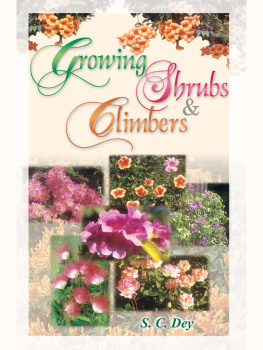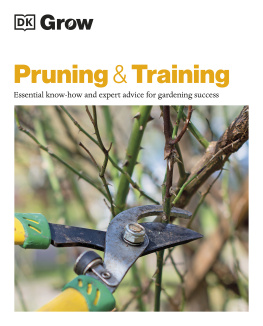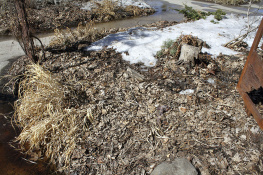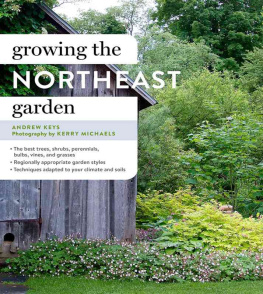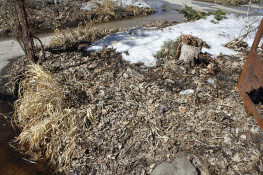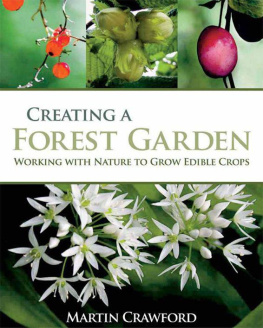Copyright
STERLING PAPERBACKS
An imprint of
Sterling Publishers (P) Ltd.
A-59 Okhla Industrial Area, Phase-II,
New Delhi-110020.
Tel: 6313023, 6320118, 6916165, 6916209
Fax: 91-11-6331241 E-mail: ghai@nde.vsnl.net.in
www.sterlingpublishers.com
Growing Shrubs and Climbers
2001, S. C. Dey
ISBN 81 207 2361 9
All rights are reserved. No part of this publication may be reproduced,
stored in a retrieval system or transmitted, in any form or by
any means, mechanical, photocopying, recording or otherwise,
without prior written permission of the original publisher.
About The Author
Capt. S. C. Dey, B.Sc. (Bot.) is a well-known horticulturist who has originated a number of new cultivars of the rose, dahlia and hibiscus. Since 1970 his reputed nursery - Horticultural Arena - has been supplying quality plants and genuine planting material to customers all over the country.
A celebrated author of twenty-two books on gardening (in Bengali and English).
By The Same Author
- Growing Flowers in Pots
- Growing Roses
- Growing Dahlias
- Gardening for Pleasure
Dedication
Dedicated to
Dr Radha Gobinda Maity
Preface
Shrubs and climbers have a great role to play in landscaping a garden. A garden cannot be imagined without a shrub. A house without a strip of garden space is found to have a climber in the least over the arch of its gate or on the porch. In landscaping large gardens, trees, climbers and shrubs play a great role. In home gardens, shrubs are often grown in pots in numbers. This advantage, however, cannot be extended to trees and climbers. In a single genus Rosa, innumerable species and cultivars of shrubs and climbers are available. Rosa is a genus of the family Rosaceae which comprises about two hundred ornamental species and thousands of varieties. The rose is the only flower that is adapted to all agro-climatic conditions of this globe and is known to one and all. Contrary to its shrubby nature, the rose is shaped to give a tree form by budding at a certain height of a cane-like rootstock. Such decorative miniature trees are used to put an accent on colours as well as to remove the monotony of green carpet stretches. On a small lawn or in the island of a lily pool, a solitary tree rose is planted in the centre.
Hawaiian hibiscus (Hibiscus rosa sinensis)is another shrub which has innumerable varieties. They, like the rose, are propagated by budding. Hibiscus, like mussaenda, prefers tropical or subtropical climates. In this country, the peninsular region in the south is highly suitable for the hibisci. The region along the coastal line is also suitable for it.
What is the distinction between trees and shrubs? In literature, many trees are included in the group of shrubs and many climbers which are treated as shrubs by clipping their heads are grouped as shrubs. To the readers, such literature is sure to create confusion as to the classification of these plants. In height, shrubs lie between trees and herbs; bamboo being an exception, which, in spite of being equal to tall trees, is regarded as a shrub. In structure, shrubs exhibit a bushy character from base to top. Generally shrubs and climbers are propagated vegetatively whereas trees are multiplied by seed.
The book contains specific and varietal descriptions of as many as 175 plants. Besides, the emphasis is laid on agrotechnique, propagation, pest and disease control. It is useful to home gardeners, nurserymen and to all who are concerned with ornamental horticulture. I am thankful to those who directly extended their help in preparing the manuscript and bringing out the book.
S.C. DEY
Horticultural Arena
Jhargram, Midnapore
Introduction
The difference between shrubs and climbers is mainly in their heights but in other aspects they are almost equal. Most climbers are known as Climbing Shrub or Scandent Shrub. Although climbers have shrubby growth due to a number of stems arising from the base, it is usually trained to be a singlestemmed plant. But in the case of the sub-scandent or trailing shrubs, they are treated as a shrub. If short trellises are provided for support, they are not blown over by wind and can manifest their full glory. There are many species of climbers which are treated as a shrub by regular clipping of their trailing shoots.
In spite of their similarity, both the groups of plants are dealt with here separately first shrubs and then climbers. Soil and site, soil preparation and cultural operations are discussed first in three separate chapters. The items of cultural operations are discussed in the light of general treatment. The specific characteristics in regard to the cultural aspects are included in the description of the species.
In obtaining planting material, one has to go to a nursery or get it propagated by oneself for own use. For commercial purposes too, one has to be well-versed in the propagation technique. The technique of plant propagation is incorporated in the fourth chapter entitled Planting Material.
Climbers need support. In shaping the spread of the plant, the type of the support has its significance. For example, the arch and trellis give different shapes of the same species. The arches and pergolas form an overhead green or colourful canopy whereas the trellis help to form a living screen. All these have been dealt with in the relevant chapter, i.e., Support for Climbers.
Climbers are more resistant to pests and diseases than shrubs. The shrubs of hybrid origin are susceptible to a number of insect and disease attacks. Pest and disease control has been discussed in chapter-14.
The Appendices include a list of nurseries dealing in the planting material of shrubs and climbers. A list of relevant reading materials has also been appended. To find out species and cultivars in the text, an index has been given at the end.
To reinforce the text, a number of figures and photographs have been presented. All the figures are drawn by the author himself.
01. Importance Of Shrubs And Shrubberies
F lowering shrubs, in a garden, are a perennial source of enjoyment. Colourful flowers can be had through all seasons from a well-grown shrub garden. The colourful wings of visiting butterflies add beauty and elegance to a floriferous shrub garden. The humming of bees and the chirping of small birds in a shrubbery improve the environment by maintaining an eco balance. Dust and noise pollution is reduced to a great extent by thick shrub plantings around the house. Ornamental flowering shrubs, being perennial in habit, occupy a permanent place in the garden. The shrubbery should occupy the middle place between trees and herbaceous annuals. Besides, shrubs may be planted solitarily or in small groups for creating different effects. Shrubs of fragrant flowers should be planted separately; because for them special positions are selected so that their perfume may be enjoyed to the maximum.
Shrubs, unlike trees, are not one-stemmed plants. A number of branches grow from the base of the plants. Their height ranges from 50 centimetres to five metres. Their flowering time also varies. With a proper selection of cultivars, a shrubbery can flower throughout the year. The colour, size and form of flowers vary immensely from species to species.
A shrub-border demarcates boundaries. Shrubs grown near the house serve as foundation plantings which visually tie the house to the ground. To effect this, taller specimens should be planted in corners and the other kinds in-between.
02. Soil And Site
G enerally most of the shrubs and climbers grow in any kind of garden soil. In other words, heavy, loamy or sandy soil can be used for growing shrubs and climbers. A good number of them, however, have climatic preference. For this reason, some prefer humidity of a heavy rainfall area and others have their liking for a very dry season for heavy flowering. The temperate climate of hilly areas is suitable for many shrubs. In the plains they, though grown, are hardly found to flower profusely. In the description of the species, their climatic preferences have been pointed out.

